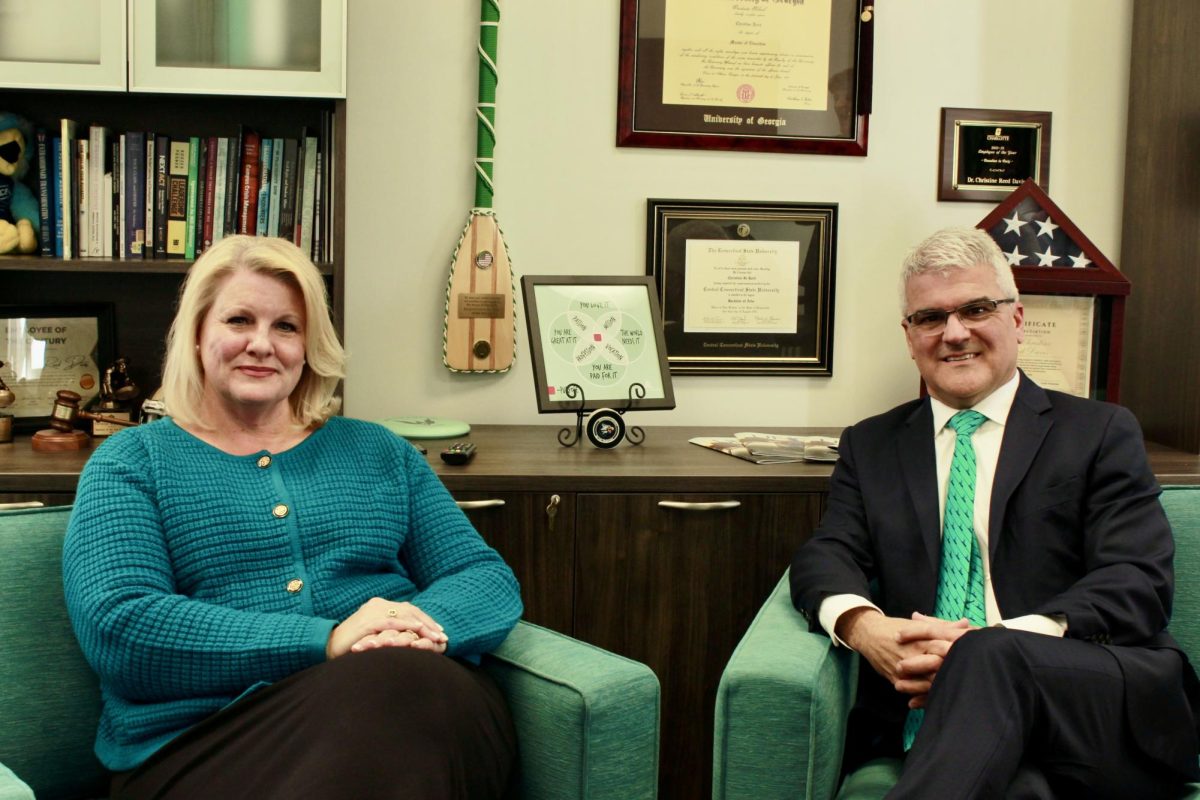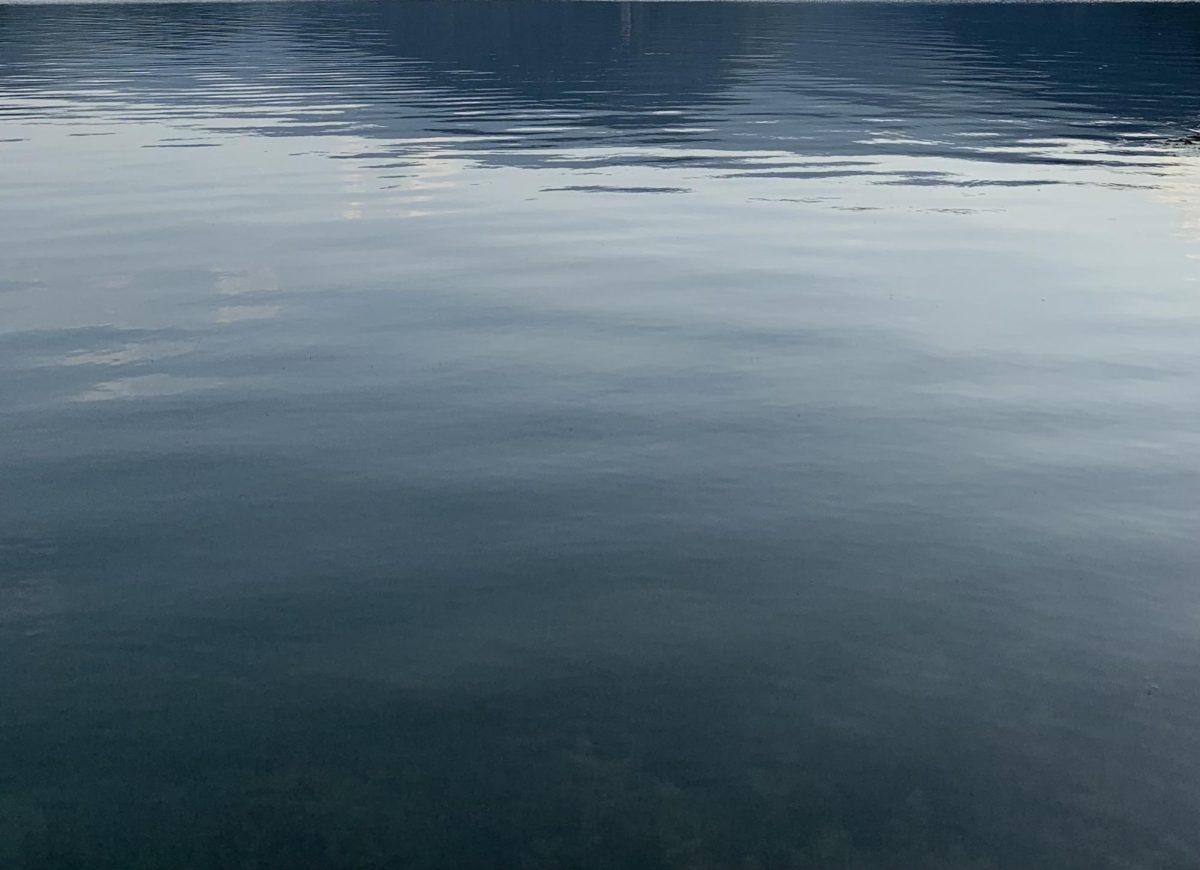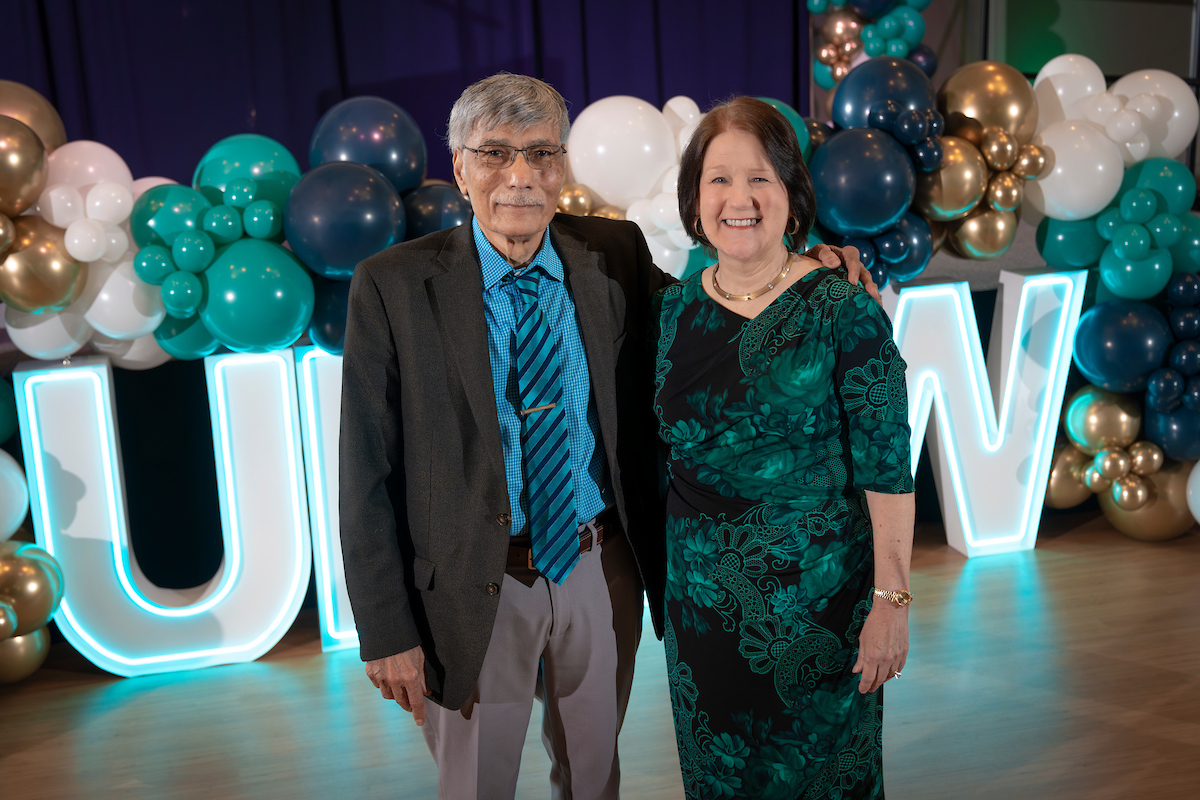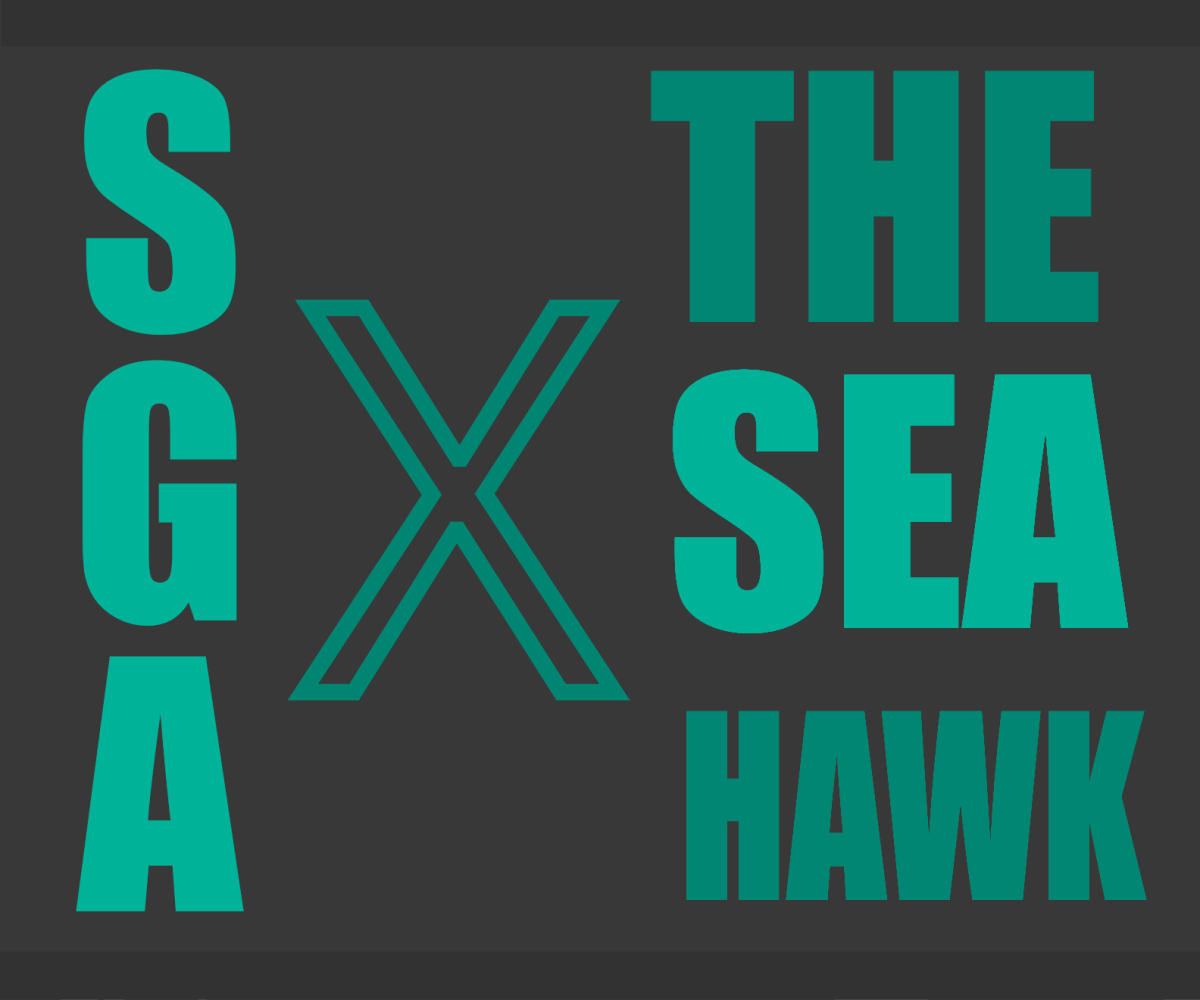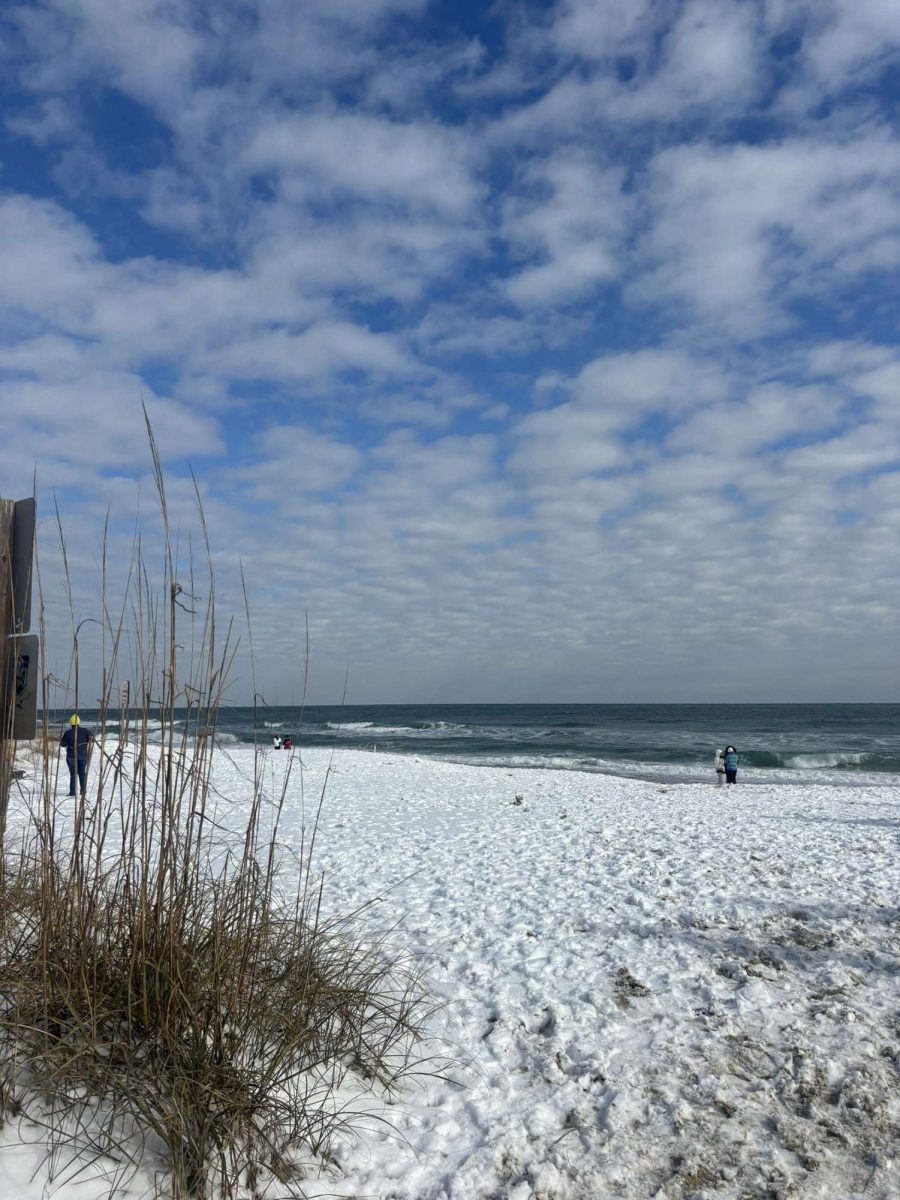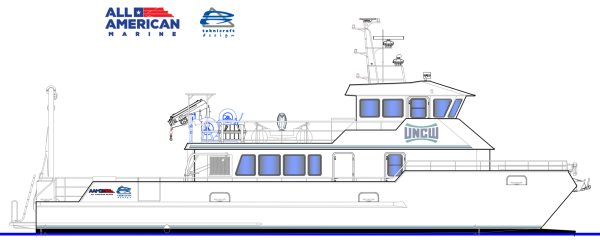
After 35 years, UNCW’s Center for Marine Sciences (CMS) is working to enhance its capabilities by introducing a new research vessel to its fleet in 2026. This new vessel will be the longest yet, measuring 73 feet, almost 10 feet longer than the current vessel. This will allow for a broader range of marine activity to occur, such as fishery surveys, and research diving.
The new vessel is undergoing many improvements. This multi-use, multi-discipline vessel will be suitable for just about anything in marine biology, including marine survey work and oceanographic instrumentation deployment recovery. Jay Styron, Associate Director of Marine Operations for CMS, said, “We’re hoping that it will be suitable for just about anything a marine scientist can think to do on the water.”
Styron is the main captain of the boat. He is working with a team at the CMS to monitor the boat, including Dr. Kenneth Halanych, Executive Director of CMS. Together they are operating with All American Marine, an internationally recognized vessel builder, to design and construct the ship. Halanych said “We engage in meetings every other week on boat design and development. We will even go out there several times for boat building.”
The ship is also set to be a smart vessel, which means it will contain its own computer system. Some of this advanced technology will be integrated into the ship, but some will be taken on and off the vessel each time it is used, including computers needed off the ship as well as UNCW’s R/V vessels. The vessel will be designed to handle electrical and computational needs for equipment brought onto the ship, such as navigational and communication systems. Both Halanych and Styron shared that one of the greatest developments will be satellite communication. This will allow data collected on the vessel to beam directly to shore in real-time, while in the past data could not be sent back before the crew returned. The ship will have the ability to hold about 10 people for up to five days offshore. “It will give the university a state-of-the-art cutting-edge marine research vessel. Basically, a floating classroom. The vessel will expand the capabilities well above what we have currently with our vessel.” Styron says.
Another one of the vessel’s main jobs will be maintaining oceanographic buoys. Buoys on open water must be checked and serviced regularly. This new vessel will be able to handle two at a time, while the current vessel can only handle one at a time. “We have a number of research programs ranging from biology to geology to physical oceanography, this vessel will support them all.” Halanych shared.
Though the vessel is not scheduled to arrive until 2026, Halanych said that there are a couple of projects in the works. This includes ‘MarineQuest,’ the university’s K-12 outreach program that engages with 8,000 kids per year. This program aims to provide academic opportunities for young minds to explore marine biology and environmental sciences. Students will have the ability to go out on the boat and learn about the scientific equipment. Another project shared by Halanych is the Coastal Ocean Research and Monitoring Program (CORMP). A few professors, led by assistant professor of the department of biology and marine biology Bradley Tolar, received a grant from the UNC System Office, which includes a team of UNCW scientists who are looking at the ecosystem offshore. Halanych shared that this project is going to be incredibly important for providing baseline data as climate change continues to have greater impacts on coastal waters. This project will run long enough that they will most likely be one of the first groups to use the ship.
Styron said the vessel could also be used in collaboration with other institutions. Marine geophysical scientists are already using existing vessels through the center so it is likely that these projects will continue using the new vessel. The vessel’s life span is about 30 years, so part of Halanych’s job is to think about the long-term goals over the next 10-20 years; “The long-term goal is simple, to enhance the research and educational opportunities for the UNCW community.”
Regarding access, anyone is welcome to use the vessel, no matter what their major is. Styron shared that the ship will be used on a first come first serve, allowing for collaborative projects between students and staff across many disciplines. People are welcome to reserve the boat for a day. However, grant money must be brought in before use. Halanych stated that grants often come from the National Science Foundation (NSF) or National Oceanographic and Atmospheric Administration (NOAA). Once a grant is received, the ship may be booked and taken out for research.
Halanych shared a bit about the plan to improve the environmental impacts of the ship. There are measures taken to ensure equipment used on the vessel is more sustainable. Much of this will stem from the use of new and improved technology. Pieces of equipment used in marine systems, such as computers, are becoming smaller, cheaper and more accurate, which allows for better sustainable practices. “There is no easy answer to climate change. A lot of it will have to focus on decarbonization both onshore and offshore,” Halanych said. Through this vessel, he hopes that we will be able to understand climate change on the water better to determine viable solutions in the future.
The vessel will not only be used for UNCW research but also to benefit the Wilmington community. Halanych said he wants to focus on issues the community cares about, such as climate change. He shared that the ship can be used to understand what is happening in local marine fisheries. Since Ecotourism is huge, many people come to the coast to go fishing, so finding ways to make this practice more sustainable is important for Wilmington’s community. It can also be used to understand local currents in the region. Every time we get a named storm, a tropical storm that has been given a name by the National Hurricane Center, rip tides increase, making the ocean more dangerous for people to be in. Therefore, the vessel will be used to help understand local current patterns better to protect swimmers, other boaters, and people who live on the shore. Another project in progress is looking at the shoal’s area south of Wilmington. In this area, the Army Corps of Engineers is working on using sand to replenish beaches that are facing a shortage. With help from the vessel, our crew’s job is to do an environmental assessment to figure out the issue. Projects such as this one will help federal agencies make decisions about the environment that impact the community.
This new vessel will be able to indulge in many more marine opportunities than the current vessel, contributing to research and a safer community. Halanych shared, “I am most excited to see how it enables UNCW researchers to do what they need to do. To see how the new vessel is going to enable researchers to create new and innovative science.”





